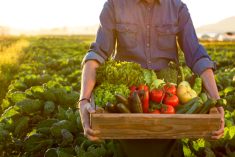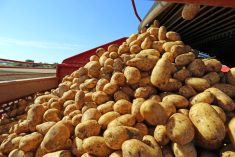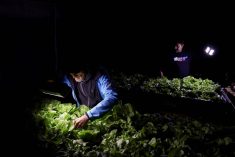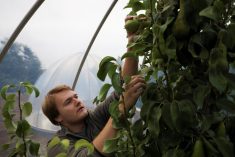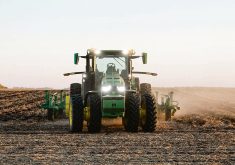Canada has become a net exporter of peppers and tomatoes thanks to growth in controlled environment agriculture, but the sector has lots of room to expand says a Farm Credit Canada economist.
Exports of greenhouse-grown cucumbers also equal or exceed imports.
“Canada continues to rely heavily in imported fruits and vegetables, especially during its long winters,” wrote FCC senior economist Amanda Norris in a May 28 report.
“Different types of controlled environment agriculture (CEA) are gaining momentum to overcome this problem.”
While greenhouses are the most recognized form of controlled environment agriculture, the category also includes insect farming, aquaculture, lab-grown meat, and vertical farming, Norris added.
Read Also

Canada agriculture minister says canola trade prospects are improving after China visit
Canada’s agriculture minister Heath MacDonald said in an interview on Monday his weeklong trip to China is evidence of bilateral relations beginning to thaw, something desperately needed by Canada’s farmers and canola exporters.
Opportunities
Due to their extended growing season and ability to stack crops vertically to reduce footprint, greenhouse-grown crops tend to yield more per acre than the same fruits and vegetables grown outdoors.
Canadian greenhouses can typically operate for nine months out of the year.
“The advantage is striking, ranging from five times more pounds per acre for tomatoes to an impressive 30 times more for herbs,” said Norris.
Along with growth in peppers, cucumbers and tomatoes, greenhouse-grown strawberries have also gained ground in Canada. Production went from neglible in 2020 to 16.5 million pounds in 2024.
Canada has also added 70 new operations and 19 per cent more greenhouse area since 2013 outside of Ontario, the hotspot for greenhouse ag.
Lettuce, herbs and strawberries represent areas for further expansion.
“To realize this opportunity, Canada must invest in practices to boost productivity through labour and resource saving technologies, research and development for new crops, and explore ways to bring CEA to more regions,” Norris wrote.
Downsides
Most fruits and vegetables Canadians eat come from outdoor farms or imports because many crops aren’t suited to indoor environments. Potatoes, for instance, require deep, loose soil.
Controlled environment agriculture—like much of agriculture—requires a lot of capital to set up due to the many systems and technology involved.
Operating expenses are also rising—up six per cent annually on average over the last decade. Sales rose by 6.4 per cent over the same period, which kept margins a bit above break-even.
Greenhouse agriculture also faces a labour crunch. The number of workers under age 60 has shrunk an average of eight per cent annually for the past five years.
Greenhouses also find themselves competing for limited municipal infrastructure like energy, water and waste services. This makes building or expanding more challenging.
“Investment and the adoption of technology will be crucial to overcoming high operational costs, address labour and infrastructure constraints, and allow the sector to reach its full potential,” Norris said.






